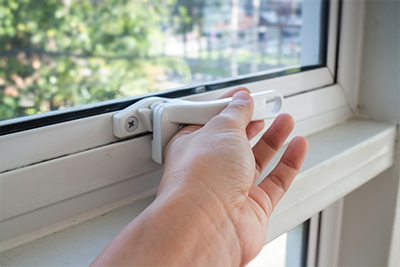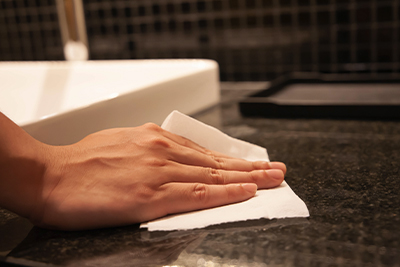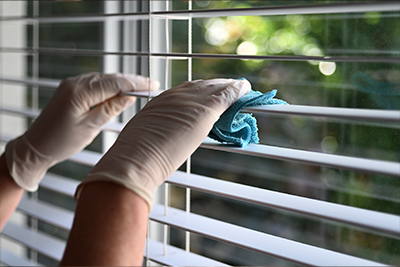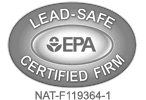How To Improve Indoor Air Quality Naturally

Globally, there are over 4.5 million premature deaths linked to respiratory problems caused by air pollution. It is also reported that the cost incurred through air pollution currently stands at $8 billion a day globally. The air quality in your home may not be as good as you may think. Given that the average American spends 87% of their time indoors, the importance of clean indoor air cannot be overemphasized.
Many factors can contribute to low-quality indoor air, including low-quality building materials, outdoor pollution, and harmful emissions from some home appliances. Diseases like Asthma, lung disease, and fatigue have been linked to bad air quality. To avoid these health complications, you can test your indoor quality using a home air testing kit available at your local hardware store. Here are a few tips on how you can improve air quality naturally without breaking the bank.
1. Opening Windows and Doors
Opening up your windows and doors when the temperatures are favorable is a great way to improve your living space’s air quality. Moreover, opening them in hot seasons can be an efficient and cheap way of cutting air conditioning costs. Opening the windows will also allow the stale air or dusty air to flow out and let in clean and fresh air to flow in the home. You can try testing the air quality before and after opening up the windows and doors to determine the technique’s effectiveness.

2. Ventilate Your Cooking Space
The kitchen is the main culprit in indoor air pollution. Gas stoves are sources of many harmful contaminants that include carbon dioxide, carbon monoxide, and nitrogen dioxide. Electric stoves also produce some pollutants, although on a much lower scale. To be on the safe side, make sure that your cooking space is well ventilated to allow the gases to escape.
3. Use Bee Wax Air Candles
Bee wax candles are known for having air purifying qualities. As bee wax candles burn, they release negatively charged ions, which help arrest positively charged pollutants such as dust, pollen, and other pollutants. When the negatively charged ions are released into the home atmosphere, they get attached to the positively charged pollutants, sucking them to the candle while others like dust fall to the ground. That is the same principle by which many purifiers operate.
4. Introduce Indoor Plants
Apart from adding color to your living space, plants act as natural air purifiers. Irrespective of your home’s size, you can always find a space to squeeze in several house plants. However, not all house plants have the same purifying qualities. Some plants like bamboo palm, English ivy, Red Edged Dracaena, and Mass Cane have excellent air-purifying properties.

5. Avoid Smoking Inside Your House
Besides being a harmful habit, secondhand smoking can be very harmful to the other people who share the same space with you. It is estimated that there are over 7000 chemicals in secondhand smoke that remains in the air for over five hours. Designating your living area as a smoking-free zone could see a significant improvement in your house’s air quality. If you are a smoker, you can designate a specific zone for smoking away from the main living area to avoid endangering your family members’ lives.
6. Ensure There Are No Damp Surfaces in the House
Molds, viruses, and mites love moist and warm places. Their presence in the house can be the source of infections and foul odor. To avoid dampness in the house, make sure you adequately dry the kitchen surfaces, lock your bathroom doors when taking a shower and hang all wet and damp clothes outside. While cooking, make sure you cover up your cooking pots to minimize the steam being released into the atmosphere. Also, ensure that you properly ventilate rooms with damp surfaces to avoid condensation.

7. Check the Level of Incoming Contaminants
To improve your residence’s air quality, you must control and minimize the number of toxins you bring into your home. During the day, your shoes collect dust particles and other contaminants along the way. Make a habit of leaving your shoes at the door to minimize dust and other pollutants from entering your house.
Whenever possible, you can consider taking a shower and changing your clothes to minimize the possibility of contaminants like dust getting into the house.
8. Use Eco-Friendly Household Cleaners
Cleaning your house is one of the most significant ways of improving your house’s air quality. However, cleaning floors and surfaces using safe products is key to achieving quality indoor air. Most industrial cleaners leave residues that affect the air quality of your home. Whenever possible, use natural cleaning agents such as vinegar, baking soda, and lemon because they are non-toxic and effective.
9. Choose Secondhand Furniture Over New
Everyone loves new items. However, when it comes to furniture, new can mean introducing chemicals in your living space. New furniture will release volatile organic compounds (VOC) into your living space. VOCs are gases that are emitted by glues, fabrics, and paints.
The furniture stops emitting those volatile organic compounds after several years. By buying secondhand furniture, you will be sure to minimize the possibility of introducing toxic matter into your living space. If you must buy new furniture, check the production process and avoid furniture assembled with glues or made with particle boards.
10. Dust Your House Regularly
Dust particles that accumulate on the floor or carpet can be another source of air contamination in your home. Always ensure that your fabric carpets are dusted to eradicate allergens and trapped dust particles. Additionally, make sure that you regularly mop wood, vinyl floors, and tiles. Dust particles also accumulate on other surfaces like bookshelves, TV stands, and also inside electronic equipment. Ensure that all your household items and surfaces are adequately dusted to improve your home’s air quality.

11. Swap Synthetic Air Fresheners With Natural Ones
Your home will need some form of freshening once in a while, especially if there are some foul odors. Most people will rush to use synthetic air fresheners. However, the fragrances added to many air fresheners can negatively affect people with respiratory problems. In their place, you can try using fragrances from natural sources. Carefully chosen and mixed essential oils can be very useful in eliminating foul odors while at the same time maintaining good air quality.
Final Thoughts
As you can see, there are numerous ways through which you can improve the air quality of your house. Some of them may work for you, while others may not work for you depending on your circumstances. The best thing about improving your indoor air quality naturally is that it doesn’t put a dent in your wallet.
If you are wondering where to start, do not worry. At Brennan Heating & Air Conditioning, we will answer all your queries concerning air cleaning, heating, and all there is to know about HVAC systems. With our more than 30 years of heating and air conditioning experience, you can be assured of the best quality service that will exceed your expectations.
We also offer AC-related services, furnace services, and heat pump services. Our company also deals with the sale of heating and air conditioning systems and other packaged systems. If you live in the western Washington area and have issues with your home’s air quality, please contact us today, and you will get customized solutions that will suit your residential property.






